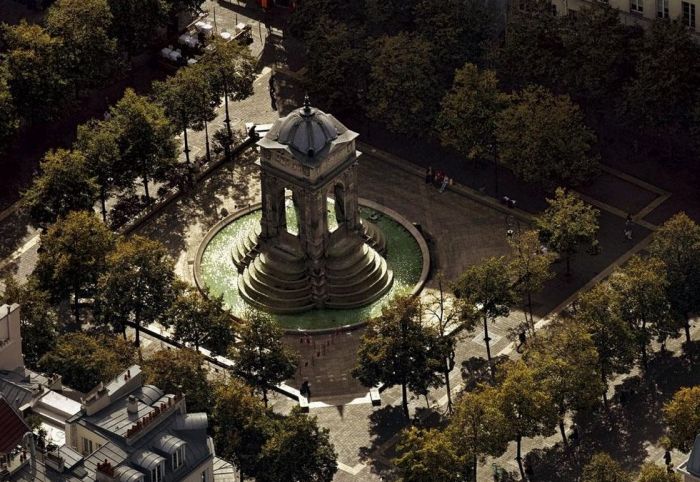|
|
Bird's-eye View Of Paris, France
|
• Merovingian and Feudal Eras
The Paris region was under full control of the Germanic Franks by the late 5th century. The Frankish king Clovis the Frank, the first king of the Merovingian dynasty, made the city his capital from 508. The late 8th century Carolingian dynasty displaced the Frankish capital to Aachen; this period coincided with the beginning of Viking invasions that had spread as far as Paris by the early 9th century. Repeated invasions forced Parisians to build a fortress on the Ile de la Cité; one of the most remarkable Viking raids was on 28 March 845, when Paris was sacked and held ransom, probably by Ragnar Lodbrok, who left only after receiving a large bounty paid by the crown. The weakness of the late Carolingian kings of France led to the gradual rise in power of the Counts of Paris; Odo, Count of Paris was elected king of France by feudal lords, and the end of the Carolingian empire came in 987, when Hugh Capet, count of Paris, was elected king of France. Paris, under the Capetian kings, became a capital once more.
• Middle Ages to 19th century
Paris's population was around 200,000 when the Black Death arrived in 1348, killing as many as 800 people a day; and 40,000 died from the plague in 1466. During the 16th and 17th centuries, plague visited the city for almost one year out of three. Paris lost its position as seat of the French realm during occupation of the English-allied Burgundians during the Hundred Years' War, but regained its title when Charles VII of France reclaimed the city from English rule in 1436. Paris from then on became France's capital once again in title, but France's real centre of power would remain in the Loire Valley until King Francis I returned France's crown residences to Paris in 1528.
|
|









